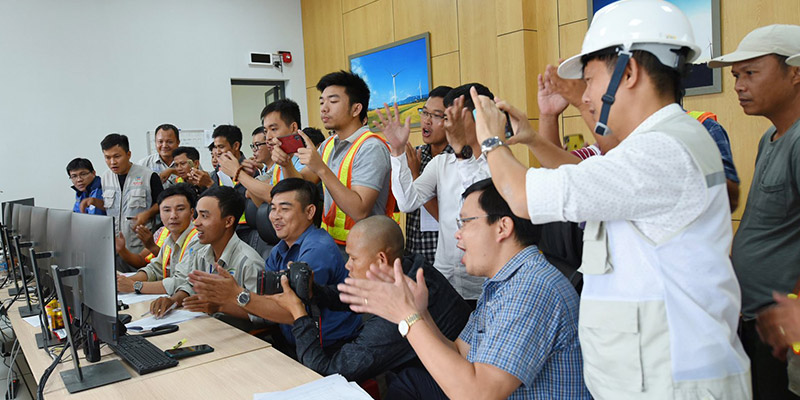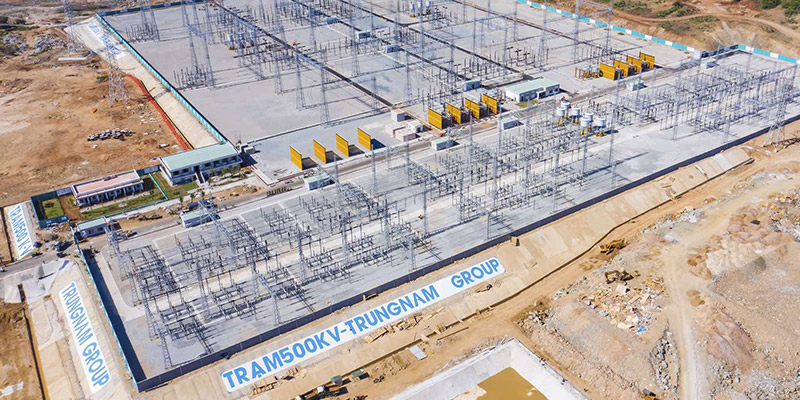First private-invested 500/220kV transmission line in Vietnam connected
Private investment is of much consideration in transmission network which has been a solely state job.
A privately-invested 500/220kV substation and transmission line was plugged in the national grid on September 29, marking it the first power transmission infrastructure of its kind, which is traditionally run by state-owned Vietnam Electricity (EVN).
| Trungnam's transformer plugged in the national grid. Photo: Trungnam Group |
This transformer combined with a 450-megawatt (MW) solar farm that belongs to a VND12 trillion (US$522 million) project invested by Trungnam Group, one of the leading private power developers in Vietnam.
The 500kV line with a length of more than 17 kilometers connecting Ninh Thuan and Binh Thuan will improve the transmission capacity in the two provinces in the central region which is considered Vietnam’s renewable energy hub.
The transformer having two 500 kV/900 MVA designed and manufactured by Siemens AG is capable of supplying sufficient power to an area of two provinces or cities.
Once put into operation, the project materializes the government’s resolution on turning Ninh Thuan into the country’s renewable energy hub by easing transmission overload that has harmed the generation situation by dozens of power plants in the region.
| The 500kV substation helps ease transmission overload in Ninh Thuan and Binh Thuan. Photo: Trungnam Group |
An overload on the national grid has been reported for the past two years when a raft of new solar farms began transmitting their output to the grid.
Almost 4,900 MW from 86 projects were added to the grid by the end of June 2020 to beat the deadline for the price incentive, overloading the transmission lines.
As a result, the power plants have been running at 30%-40% of their capacity since.
Encouraging private investment in the power sector has been stated in a resolution by the Politburo, the country’s most powerful body, under which, private companies will be eligible to develop transmission network that has so far been solely EVN’s job.
In the National Power Development Plan VIII (PDP8) for 2021-2030 which is expected to be submitted to the prime minister in October, private investment will also be encouraged in the power sector in the face that the country needs roughly US$133.3 billion for power projects by 2030.













